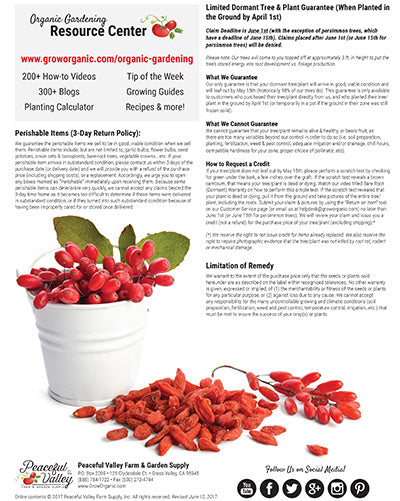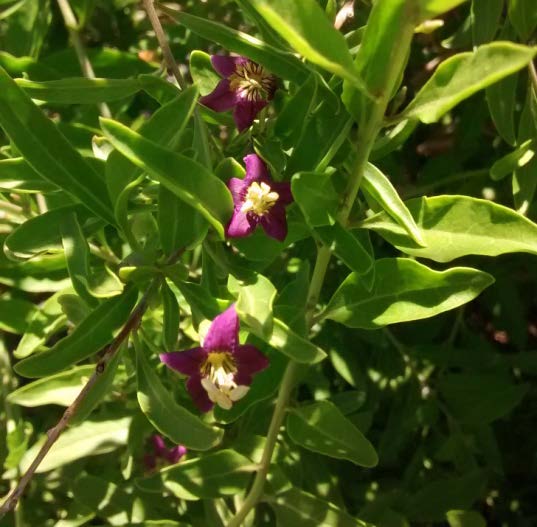1 Goji berries / RHS Gardening
- Author: rhs.org.uk
- Published Date: 09/11/2022
- Review: 4.88 (843 vote)
- Summary: Goji berries are not generally difficult to grow; … Plant in free-draining soil that has been enriched with well-rotted garden compost or manure. Space plants
- Source: 🔗
2 Backyard Gardener – Growing Goji Berries – December 2, 2015
- Author: cals.arizona.edu
- Published Date: 06/13/2022
- Review: 4.64 (319 vote)
- Summary: · Goji (Lycium barbarum) is native to tropical or warm regions of mainland East and Southeast Asia and South Africa. Other common names are
- Source: 🔗
3 How to Grow Goji Berries (aka wolfberries)

- Author: groworganic.com
- Published Date: 04/12/2022
- Review: 4.43 (507 vote)
- Summary: · Goji berries, also known as wolfberries or lycium barbarum, are hardy plants that are drought tolerant and grow in zones 3-10 . A brightly
- Matching search results: Long-prized for their health benefits, goji berries are loaded with antioxidants and have high concentrations of vitamin B, C, and amino acids. They are often made into juice, herbal teas or eaten fresh as a snack in trail mix. Dried goji berries …
- Source: 🔗
4 Goji Berry Culture – Penn State Extension
- Author: extension.psu.edu
- Published Date: 11/09/2021
- Review: 4.27 (563 vote)
- Summary: In China , where most of the world’s commercial Goji berry production is found, most plants with high quality fruit are of Lycium barbarum L. var. barbarum, though some Lycium chinense Mill
- Matching search results: Plants grown from seed are similar in appearance to tomato seedlings at first. Seedlings and young plants are likely to be variable in appearance, and can be grown in a nursery until the following year, when they can be transplanted to the field. …
- Source: 🔗
5 Goji In The Garden – Utah State University Extension

- Author: extension.usu.edu
- Published Date: 02/15/2022
- Review: 4.19 (591 vote)
- Summary: Goji plants will begin producing fruit when plants are 2 years old. Maximum production will not be reached until 3 to 5 years after planting. Depending on
- Matching search results: Fruits form on current year’s wood and pruning encourages new growth, increasing yields. Pruning is also important to keep the plant open to allow for good light penetration and air circulation. Typically, no pruning is required in the first year. …
- Source: 🔗
6 Goji Berry Growing Info: Learn About How To Grow Goji Berries
- Author: gardeningknowhow.com
- Published Date: 10/22/2022
- Review: 3.92 (210 vote)
- Summary: · The bush is native to Asia, but it is also found wild in Russia, China, Turkey, and Japan. Berries are a brilliant orange-red and oval shaped
- Matching search results: Fruits form on current year’s wood and pruning encourages new growth, increasing yields. Pruning is also important to keep the plant open to allow for good light penetration and air circulation. Typically, no pruning is required in the first year. …
- Source: 🔗
7 Everything you Need to Know About the Goji Berry Plant
- Author: happydiyhome.com
- Published Date: 03/17/2022
- Review: 3.63 (422 vote)
- Summary: · The goji berry plant (Lycium Barbarum) is a hardy, deciduous shrub. Best known as a super food loaded with antioxidants, these attractive
- Matching search results: Prune your goji berry plant lightly in the spring, removing damaged and dead branches as well as any untidy growth. Be careful not to prune too heavily, flowers and fruit form on last year’s growth. Over pruning in the spring can significantly …
- Source: 🔗
8 How to Grow Goji Berries in Your Home Garden
- Author: masterclass.com
- Published Date: 05/01/2022
- Review: 3.56 (344 vote)
- Summary: · 1. Pick the site. Goji berry plants require full sun—though they will tolerate partial shade—and thrive best in USDA hardiness zones 5–9
- Matching search results: Prune your goji berry plant lightly in the spring, removing damaged and dead branches as well as any untidy growth. Be careful not to prune too heavily, flowers and fruit form on last year’s growth. Over pruning in the spring can significantly …
- Source: 🔗